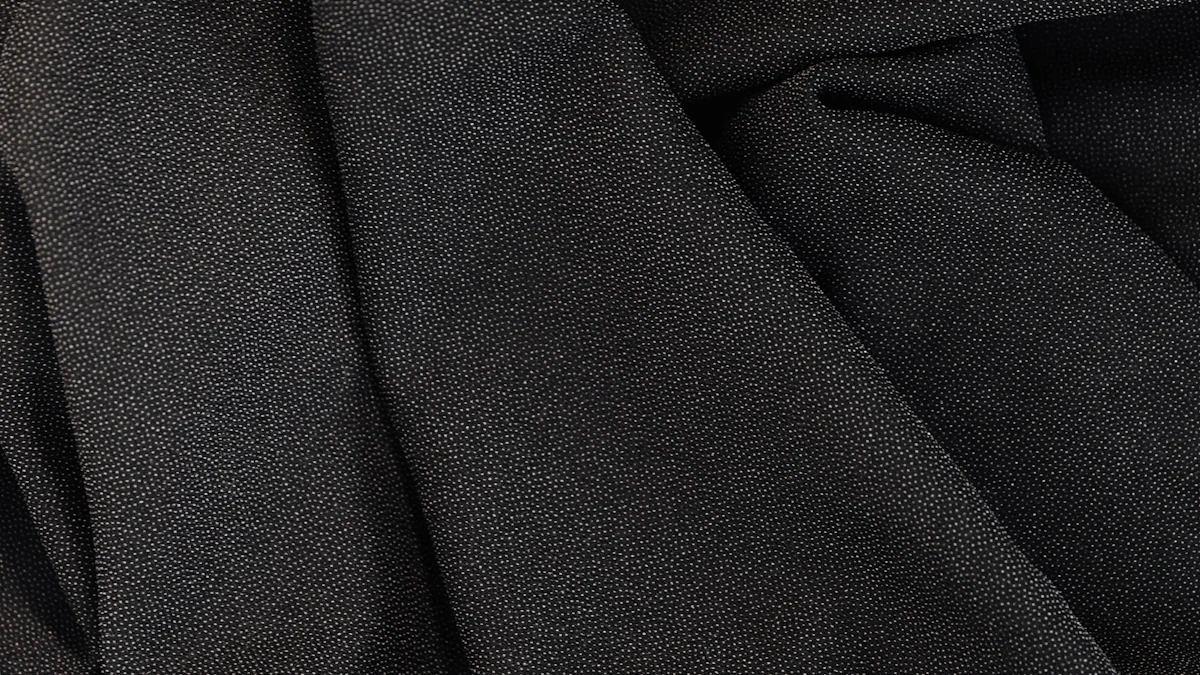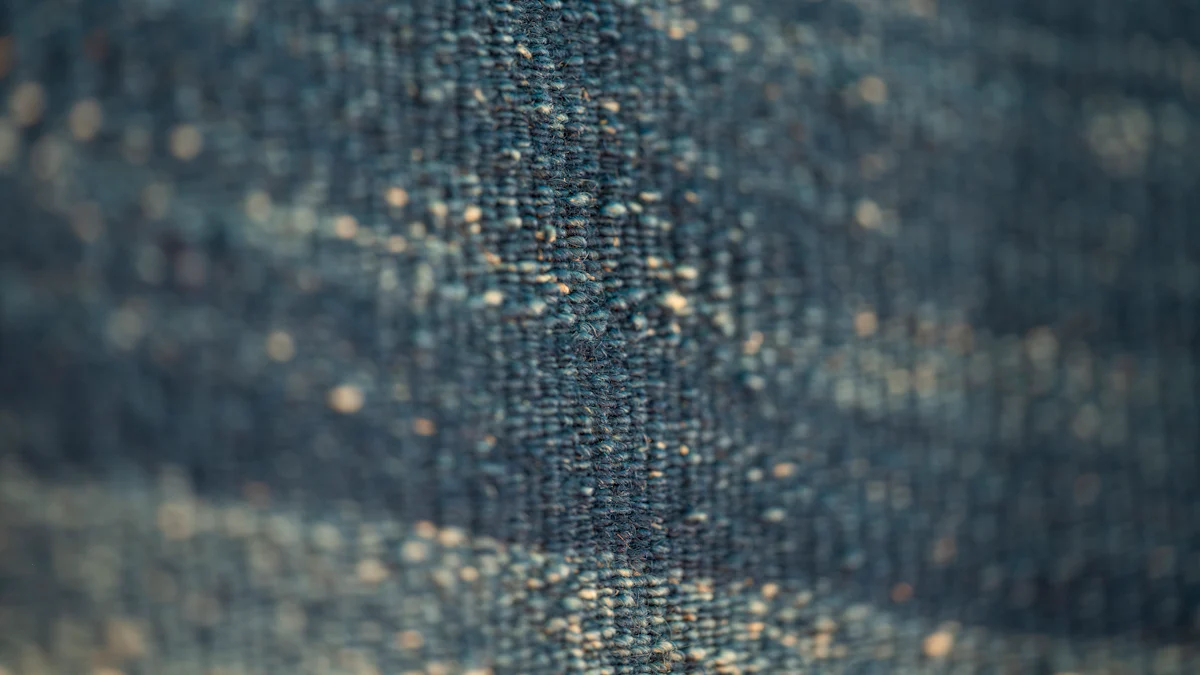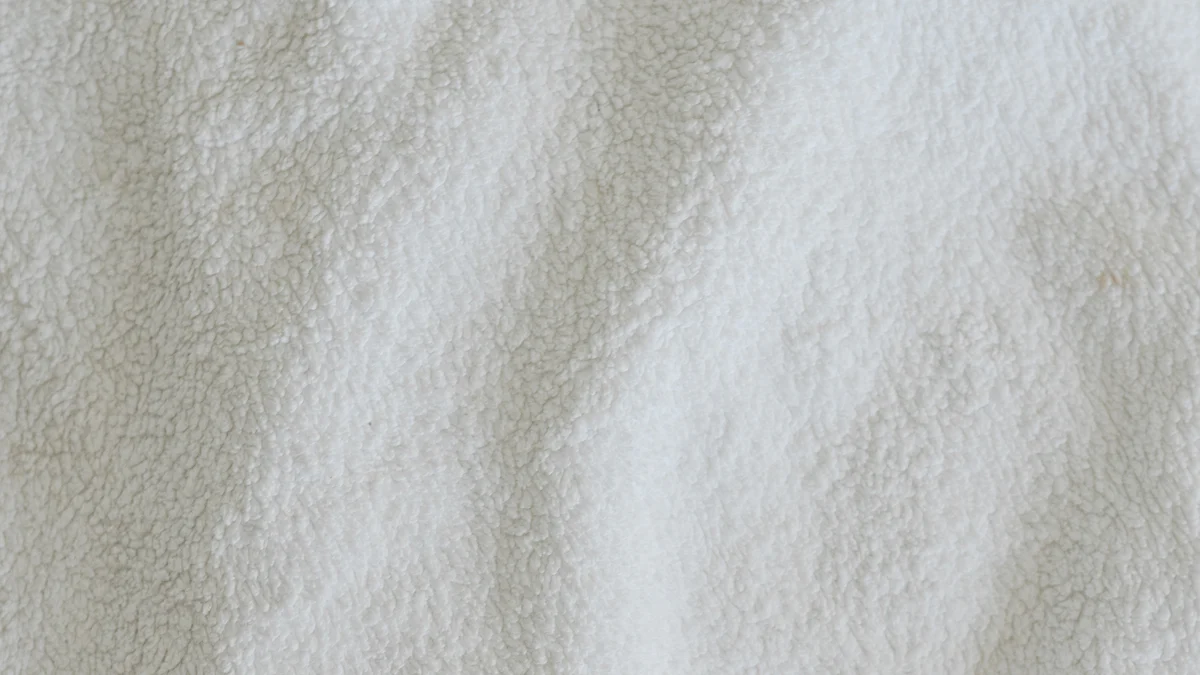 Have you ever wondered what makes French Terry fabric so special? Let me tell you—it’s all about the texture! This fabric has a smooth surface on one side and a soft, looped texture on the other. The loops feel cozy and breathable, while the smooth side adds a touch of elegance. It’s perfect for staying comfy and stylish. If you’re new to sewing, French Terry fabric is a dream to work with. It’s lightweight, stable, and easy to handle. Cutting and sewing it feels effortless, even for beginners. Plus, its stretch and drape make it versatile for all kinds of projects. Whether you’re crafting a hoodie or a pair of joggers, this fabric won’t let you down. You can explore more about it at https://www.yinsaitex.com/french-tery-fabric/.
Have you ever wondered what makes French Terry fabric so special? Let me tell you—it’s all about the texture! This fabric has a smooth surface on one side and a soft, looped texture on the other. The loops feel cozy and breathable, while the smooth side adds a touch of elegance. It’s perfect for staying comfy and stylish. If you’re new to sewing, French Terry fabric is a dream to work with. It’s lightweight, stable, and easy to handle. Cutting and sewing it feels effortless, even for beginners. Plus, its stretch and drape make it versatile for all kinds of projects. Whether you’re crafting a hoodie or a pair of joggers, this fabric won’t let you down. You can explore more about it at https://www.yinsaitex.com/french-tery-fabric/.
Key Takeaways
- French Terry fabric has soft loops on one side and a smooth surface on the other. It is both comfy and fashionable.
- This fabric is easy to use, light, and simple to sew. It works great for making hoodies and sweatpants.
- French Terry can be worn in any season. It is breathable and comfy, perfect for casual clothes and workout outfits.
What Is French Terry Fabric?

Definition and Key Features
Let’s start with the basics. French Terry fabric is a type of knit material that’s soft, breathable, and incredibly versatile. It’s made from cotton or cotton blends, which gives it a natural feel. One side of the fabric has tiny loops, while the other side is smooth and soft. This unique construction makes it both cozy and stylish. Here’s a quick breakdown of its key features:
| Property | Description |
|---|---|
| Material | Typically made from cotton fibers or cotton blends. |
| Texture | Yarn loops piled on one side, smooth and soft on the other. |
| Breathability | Offers good breathability due to its looped construction. |
| Warmth | Moderate warmth, making it suitable for year-round use. |
| Absorbency | Highly absorbent due to looped pile, ideal for activewear. |
| Stretch | Generally has some stretch for comfort and mobility. |
| Durability | Robust and long-lasting, especially when well maintained. |
| Maintenance | Low-maintenance fabric, machine washable, easy to care for. |
| Comfort | Known for its plush, comfortable feel. |
| Style | Casual and versatile, used in loungewear and athletic apparel. |
This fabric isn’t just practical—it’s also a joy to wear. Its moderate warmth and breathability make it perfect for any season.
Why It’s Popular in Sewing and Fashion
French Terry fabric has become a favorite in both sewing and fashion. Why? Let me break it down for you:
- Unmatched Comfort and Softness: It feels amazing against the skin, making it perfect for casual and athletic wear.
- Versatile for All Seasons: You can wear it year-round, whether it’s summer or winter.
- Ideal for Activewear and Casual Fashion: Its moisture-wicking properties and flexibility make it great for workouts or lounging.
- Durability Without Sacrificing Style: It holds up well after multiple washes while staying stylish.
- Sustainable and Eco-Friendly Options: Many versions are made from organic or recycled materials, which is a big win for the planet.
French Terry fabric has come a long way since its origins in 19th-century France. It started as a material for towels but evolved into a lighter, more versatile fabric. Today, it’s a staple in modern fashion, especially with the rise of athleisure trends.
Types of French Terry Fabric
Not all French Terry fabric is the same! Let me walk you through the different types so you can pick the one that’s perfect for your project.
100% Cotton French Terry
This is the classic version of French Terry fabric. It’s made entirely from cotton, which gives it a soft and natural feel. I love how breathable it is—it lets air flow through, keeping you cool when it’s warm and cozy when it’s chilly. Plus, it’s super absorbent, making it a great choice for activewear or loungewear. Here’s why I think 100% cotton French Terry stands out:
- It’s gentle on the skin, so it’s perfect for sensitive folks.
- It’s durable and holds up well after many washes.
- You can use it for everything from hoodies to comfy blankets.
If you’re looking for something versatile and reliable, this is a great option.
Blended French Terry
Blended French Terry combines cotton with other fibers like polyester, spandex, or rayon. This mix gives it extra stretch, durability, or even a smoother texture. I’ve found that blended versions are ideal for projects where you need a bit more flexibility, like leggings or fitted tops. Some popular blends include:
- Poly Rayon Spandex French Terry: It’s incredibly soft and drapes beautifully, making it great for stylish outfits.
- Right Side Loop French Terry: This one has loops on the outside for a textured look while staying smooth inside.
- Baby French Terry: It’s super gentle, perfect for baby clothes or anything delicate.
Blended French Terry is like the best of both worlds—practical and stylish.
Bamboo French Terry
If you’re into eco-friendly fabrics, bamboo French Terry is a must-try. It’s made from bamboo fibers, which makes it sustainable and kind to the planet. But that’s not all—it’s also incredibly soft. Honestly, it feels like a cloud! Here’s what makes bamboo French Terry special:
- It’s naturally antibacterial, so it stays fresh longer.
- It wicks moisture away, keeping you dry and comfy.
- It’s thinner and drapes better than cotton French Terry, making it perfect for dresses or flowy garments.
I recommend this type if you want something luxurious and gentle on your skin. It’s especially great for sensitive skin or warmer climates.
Uses of French Terry Fabric

Casual Wear
French Terry fabric is my go-to for casual wear. It’s so versatile that you can use it for almost anything. Whether you’re heading out for a quick coffee run or lounging at home, this fabric has you covered. Here are some ways it shines in everyday outfits:
- Casual outings
- Outdoor activities
- Workouts
- Relaxing at home
- Traveling
I love how it works for sweatshirts, hoodies, joggers, and even casual dresses. It’s soft, breathable, and stylish, making it perfect for all-day comfort. Plus, it’s great for baby and kids’ clothing because it’s gentle on the skin. If you’re looking for something cozy yet fashionable, French Terry fabric is a winner.
Tip: Pair a French Terry hoodie with joggers for a laid-back yet trendy look.
Activewear
When it comes to activewear, French Terry fabric is a game-changer. It’s soft and cozy, so you’ll feel comfortable no matter how intense your workout gets. The fabric’s flexibility allows for a full range of motion, which is essential for activities like yoga or running. Here’s why it’s perfect for activewear:
- Moisture-wicking properties keep you dry during workouts.
- Breathable loops allow air to circulate, keeping you cool.
- Durable enough to handle regular wear and tear.
I’ve noticed that it holds up well even after multiple washes, which is a huge plus. Whether you’re wearing yoga pants, athletic tops, or sweatpants, French Terry fabric keeps you moving in style.
Accessories and Home Items
French Terry fabric isn’t just for clothing—it’s also fantastic for accessories and home items. I’ve seen it used for headbands, scarves, and even beanies. These items feel soft and cozy, making them perfect for chilly days. At home, this fabric works wonders for throw blankets or pillow covers. It adds a touch of comfort and warmth to any space. I’ve even used it to make reusable cleaning cloths because it’s absorbent and durable.
Note: If you’re new to sewing, start with simple projects like scarves or pillowcases. French Terry fabric is beginner-friendly and forgiving.
French Terry Fabric vs. Other Fabrics
French Terry vs. Towel Terry
I’ve often been asked how French Terry compares to Towel Terry, and honestly, they’re quite different. French Terry has a smooth surface on one side and soft loops on the other, making it lightweight and breathable. Towel Terry, on the other hand, feels the same on both sides, with loops covering the entire fabric. This makes Towel Terry thicker and much more absorbent—perfect for towels and bathrobes. Here’s a quick breakdown:
- French Terry is a knit fabric, while Towel Terry is woven.
- Towel Terry is heavier and designed for high absorbency, while French Terry is lighter and better for casual wear.
- French Terry works great for hoodies and joggers, while Towel Terry shines in bathrobes and towels.
If you’re looking for something cozy and stylish, French Terry is the way to go. But for drying off after a swim? Towel Terry wins every time.
French Terry vs. Fleece
When it comes to warmth, fleece takes the crown. It’s thicker, fuzzier, and perfect for cold weather. French Terry, though, offers moderate warmth, making it ideal for layering or wearing in mild weather. I love how breathable French Terry is—it keeps me comfortable without overheating, especially during workouts. Here’s a side-by-side comparison:
| Feature | French Terry | Fleece |
|---|---|---|
| Warmth | Moderate, great for layering. | Superior, best for cold weather. |
| Breathability | Highly breathable, prevents overheating. | Less breathable, traps heat. |
| Texture | Smooth outside, looped inside. | Fuzzy and plush on both sides. |
| Versatility | Perfect for casual wear and activewear. | Ideal for jackets and outdoor gear. |
If you want something lightweight and versatile, French Terry is your best bet. For bundling up in winter? Go with fleece.
Unique Advantages of French Terry
French Terry fabric stands out for its comfort and versatility. Its breathable nature keeps you cool, while the soft loops feel gentle on the skin. I’ve found it perfect for activewear because it wicks away moisture and stretches just enough for easy movement. Plus, it’s durable and easy to care for, making it a practical choice for everyday wear. Here’s why I think French Terry is a winner:
- Comfort: Soft and cozy, perfect for lounging.
- Breathability: Keeps you cool during workouts or warm days.
- Moisture-Wicking: Absorbs sweat, ideal for activewear.
- Versatility: Works for hoodies, joggers, dresses, and more.
Whether you’re sewing your first hoodie or looking for fabric that feels amazing, French Terry fabric is a fantastic choice.
How to Work with French Terry Fabric
Essential Tools for Sewing
When I sew with French Terry fabric, having the right tools makes all the difference. Here’s what I always keep handy:
- A walking foot helps feed the fabric evenly, so it doesn’t stretch or pucker.
- Instead of pins, I use clips or wonder tape to avoid catching the loops.
- For a professional finish, I rely on a serger or a zigzag stitch to secure the seams.
- Cutting tools matter too! I prefer a rotary cutter or sharp shears for clean cuts.
These tools make working with French Terry fabric so much easier. Trust me, they’ll save you a lot of frustration!
Tips for Cutting and Handling
Cutting French Terry fabric is pretty straightforward, but I’ve learned a few tricks to make it even smoother. First, I always use pattern weights or wonder clips to hold the fabric in place. This keeps it stable and prevents shifting. A rotary cutter glides through the fabric effortlessly, but sharp shears work just as well. One thing I love about French Terry is its stability. It doesn’t fray much, so it’s beginner-friendly. Just be gentle when handling it to avoid stretching the loops. These small steps help keep your fabric in great shape for sewing.
Sewing Techniques for Beginners
If you’re new to sewing, French Terry fabric is a fantastic choice. It’s stable and easy to manage, unlike some slippery fabrics. I recommend starting with a ballpoint needle because it glides through the knit without snagging. For stitches, a stretch stitch or a long straight stitch works best. Take your time while sewing. I’ve found that using a walking foot prevents the fabric from stretching or puckering. And don’t forget to finish your seams with a zigzag stitch or serger for a polished look. These techniques make sewing with French Terry fabric a breeze, even for beginners.
Tip: Practice on a small swatch first to get comfortable with the fabric and your tools.
Care and Maintenance of French Terry Fabric
Washing and Drying Guidelines
Taking care of French Terry fabric is simple if you follow a few basic steps. I always start by washing it in cold water. This helps prevent shrinking and keeps the colors vibrant. A gentle cycle works best because it minimizes wear and tear on the fabric. When it comes to drying, I avoid high heat. It can cause shrinkage and damage the material. Instead, I lay my garments flat to air dry. If I’m in a hurry, I’ll use the dryer on the lowest heat setting. Oh, and skip the fabric softener! It can make the fabric stiff, which defeats the purpose of its cozy feel.
Pro Tip: Wash French Terry items separately to avoid looping or piling caused by friction with other fabrics.
Storing Tips
Proper storage keeps French Terry fabric looking great for years. I always fold my garments instead of hanging them. Hanging can stretch the fabric over time, especially for heavier items like hoodies. I store my folded clothes in a cool, dry place. This prevents moisture buildup, which can lead to mildew. To keep the colors from fading, I make sure they’re out of direct sunlight. These small steps go a long way in preserving the quality of the fabric.
Preventing Pilling and Maintaining Softness
Pilling can be annoying, but it’s easy to prevent. I wash my French Terry items inside out to reduce friction during the wash. Using a gentle cycle and a mesh laundry bag adds extra protection. I also avoid overloading the washing machine, which can cause unnecessary wear. To maintain softness, I stick to cold water and a color-protecting detergent. Air drying is my go-to method, but if pills appear, I gently remove them with a fabric shaver. Avoiding harsh chemicals and high heat keeps the fabric soft and durable.
Note: Proper care not only prevents pilling but also ensures your French Terry fabric stays as cozy as the day you bought it.
French Terry Fabric has so much to offer. Its unique construction, with loops on one side and a smooth surface on the other, makes it soft, breathable, and perfect for all-season wear. I love how it keeps you cozy in cooler weather but stays comfortable when it’s warm. Whether you’re lounging at home or heading out, it’s always a great choice. If you’re new to sewing, give it a try! It’s easy to work with and forgiving, which makes it perfect for beginners. Experienced sewists will also appreciate its versatility for creating stylish and functional garments. From hoodies to activewear, this fabric truly does it all.
Why not start your next project with French Terry? You’ll love how it feels and how easy it is to sew!
FAQ
What makes French Terry fabric different from other knit fabrics?
French Terry stands out because of its looped texture on one side and smooth surface on the other. It’s breathable, soft, and perfect for casual or activewear.
Can I sew French Terry fabric without a serger?
Absolutely! I’ve sewn French Terry with just a regular sewing machine. Use a zigzag or stretch stitch for seams, and you’ll get great results.
Is French Terry fabric suitable for hot weather?
Yes! Its breathable loops keep air flowing, making it comfortable even in warm weather. I love wearing lightweight French Terry tops during summer.
Tip: Choose bamboo French Terry for extra cooling and moisture-wicking properties.
Post time: Jan-26-2025
